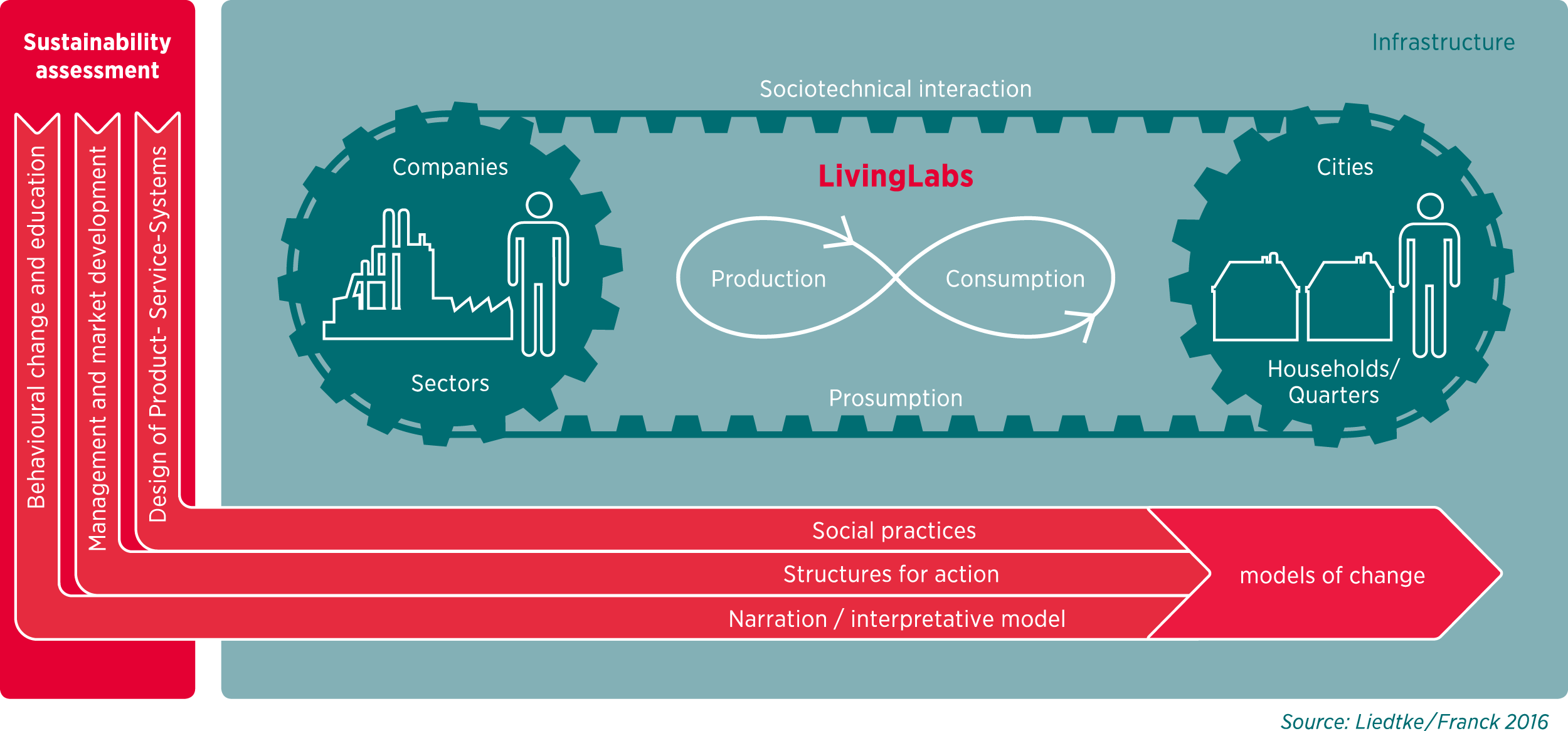Resources
Transition Design in the Discourse on Sustainability
The design of products and services is not only defined by their functionality and aesthetics, but also by their environmental impact. Innovations and ideas are realised in products and infrastructures. The Wuppertal Institute researches how product-service systems can be made more sustainable.
The MIPS (material input per service unit) method developed for this purpose analyses the structure of actual resource consumption and indicates which products or services are the more favourable alternatives. The intensity of usage is derived by evaluating the service unit. It is clear that a user-integrated approach reveals new design solutions for products and services in terms of sufficiency, efficiency, and consistency. The demand for lifestyle-oriented, differentiated products and services that also enhance quality of life while also protecting the environment is more topical than ever. That is why eco-intelligent, sustainable design has been extended to “transition design” by agents for integrated design – such as social design approaches, living labs and real-world laboratories.

In particular, the Sustainable Production and Consumption Division at the Wuppertal Institute primarily deals with the preconditions of sustainability and transition design. This is done in close cooperation with scientific institutions for design and design education, especially the Folkwang University of the Arts.
With its sustainability research in the field of design, the Wuppertal Institute contributes to revealing the potentials of design and research for the energy and resource transition. The methods address social practices in everyday life, individual usage of time and resource consumption together with the resulting expenditure for today’s lifestyle and possible future scenarios. For this purpose, the Wuppertal Institute has developed "Design Guides" in order to make the approach comprehensible and applicable for designers as well as design students, agencies, and companies.
Publi-cations
You find all scientific publications on our publication server:
Projects
Here you find research activities in the field of transition design.
